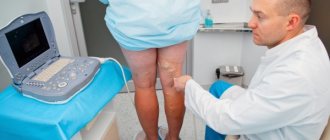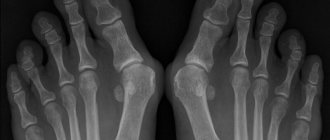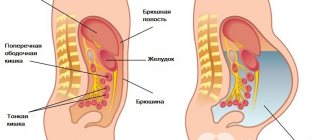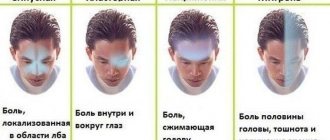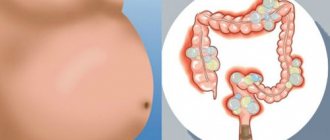- Muscle cramps are involuntary and intense muscle contractions without a period of relaxation.
- Almost everyone has experienced an episode of seizures at least once in their life.
- There are different types of seizures and different causes for them.
- Many different medications can cause muscle cramps.
- In most cases, a muscle cramp can be stopped by relaxing (stretching) the muscle.
- Muscle cramps can often be prevented by measures such as eating a nutritious diet with adequate amounts of micronutrients and keeping the body hydrated adequately.
Muscle cramps are involuntary and violent contractions of a muscle, without a period of relaxation. When muscles that can be controlled voluntarily, such as those in the arms or legs, are used, they alternately contract and relax as specific movements of the limbs are performed. The muscles that support the head, neck and torso work in unison to maintain body position. A muscle (or even several muscle fibers) may be involuntarily in a state of spasm. If the spasm is strong and persistent, then this leads to the appearance of seizures. Muscle cramps are often visualized or palpated in the area of the affected muscle.
Muscle cramps can last from a few seconds to a quarter of an hour, and sometimes longer. It is also not uncommon for cramps to recur until the muscle relaxes. Convulsive contractions can involve part of a muscle, the entire muscle, or several muscles that usually contract simultaneously when performing movements, for example, when bending several fingers. In some cases, cramps can occur simultaneously in antagonist muscles responsible for movements in opposite directions. Muscle cramps are widespread. Almost all people (some studies estimate about 95% of people) have experienced seizures at some point in their lives. Muscle cramps are typical for adults and, as they age, appear more often, but, nevertheless, cramps can also occur in children. Any muscle (skeletal) in which voluntary movements are performed can have cramps. Cramps of the limbs, legs and feet, and especially the calf muscle, are very common.
Features of the condition
The leg muscles have a striated structure and are an integral part of the skeletal muscles. If contractions of smooth muscles are called spasms with nagging pain of varying severity, then skeletal spasms are always accompanied by a strong painful reaction to muscle contractions. In addition to pain, the ability to control the muscle throughout the entire episode of cramp is lost. Skeletal muscle spasm is an absolute, involuntary contraction of muscle structures over a period of time with severe pain. There are three main types of seizures:
- tonic , when muscle spasm manifests itself as a short-term episode, but is caused by external or internal factors;
- clonic , when muscles twitch periodically with an increase and complete disappearance of contractions, caused by neurological disorders;
- tonic-clonic , when limb spasms are caused by epileptic seizures.
If leg cramps are rare episodes in the patient's clinical history, there should not be any particular concern about this. Increased frequency of episodes up to several times a week, severe pain during physical activity or at rest, a tendency to generalize the pathological process to both limbs, along their entire length, requires immediate diagnostic measures.
Useful: List of cough tablets
Urgent Care
If cramps in the leg area occur frequently, you need to know what to do in an emergency to get rid of such symptoms:
- It is recommended to pull the toes of the cramped leg towards you, and if it is difficult to reach, you can use a towel or belt to tighten the toes;
- in the case when there is nothing at hand that could help, you can stand with your whole foot on your toes, so that the foot bends upward as much as possible, then relax and stretch the calf muscle;
- It is necessary to massage the leg muscle starting from the tips of the fingers, towards the knee, as well as pinching and patting the leg.
Some patients find a hot foot bath to relieve very severe muscle spasms.
General development mechanisms
The nonspecific nature of the occurrence of seizures in the lower extremities is due to the polyetiological nature of the clinical situation. Convulsive syndrome may occur against the background of the following patient conditions:
- potassium or magnesium deficiency (for example, during long-term use of loop diuretics: Lasix, Furosemide);
- drug treatment of absorbent drugs for diseases of the gastrointestinal tract;
- increased sweating of any origin (potassium is removed from the body with sweat);
- psychoemotional disorders;
- vitamin D deficiency;
- chronic and acute intoxication of the body due to dehydration;
- neurotoxic damage to the lower extremities (for example, poisons of exotic insects);
- complicated neurological history;
- varicose veins;
- severe hyperthermia, cerebral hemorrhages.
Other common reasons why muscles cramp are endocrinological disorders (diabetes mellitus, hypothyroidism, hyperparathyroidism), and renal failure. Physiological factors (flat feet, increased load on the ankle joint, leg injuries of any location) can provoke strong muscle contractions.
Consultation with a doctor to identify the causes of pain in the ankle joint
Causes of cramps in women
Convulsive syndrome in women's leg muscles is often recorded under the influence of external factors. In young women, spasms and convulsions may occur due to the following conditions:
- constant diets and dietary restrictions;
- long-term use of drugs for the treatment of various diseases;
- wearing high-heeled shoes;
- increased load on the legs associated with professional activities;
- intense sports activities;
- stress and emotional instability;
- active phase of the menstrual cycle.
The eternal struggle with excess weight forces women to limit themselves in nutrition. Given the nature of some diets, a woman’s body may not receive enough beneficial microelements and vitamins that are actively involved in metabolic processes. At night, the ankle joint, tired from the load, relaxes, provoking spasmodic phenomena in the area of the foot and lower leg.
Cramps of the lower extremities during pregnancy
A convulsive symptom during pregnancy can occur against the background of excess load on the spinal column due to a growing belly. The main reasons are considered:
- shift of the center of gravity;
- compression of the venous lumens by the growing uterine cavity;
- local circulatory disorder;
- stressful situations.
Pregnancy is often accompanied by excess body weight, swelling of blood vessels due to increased blood volume, and changes in electrolyte parameters (magnesium, sodium, chlorine, potassium). Venous insufficiency is the main companion of pregnancy in the later stages of gestation, so convulsions are possible at night, at rest.
Causes of cramps in men
Considering the anatomical differences in the structure of the muscular system in men, pain during cramps is particularly intense. The pain radiates to the back and outer surface of the thigh. The density of muscle structures in the lower extremities causes the appearance of severe pain during spasmodic manifestations. The main causes of cramps in the lower extremities in men include:
- excessive physical activity;
- professional activities (drivers, loaders, builders):
- intense sports activities;
- sedentary lifestyle (convulsions occur due to the accumulation of lactic acid);
- uncomfortable and tight underwear;
- overweight;
- addiction to alcoholic beverages, smoking.
Men are less picky about their own diet. When consuming aggressive foods (spicy, sour, salty, alcohol), they contribute to the leaching of potassium and magnesium from the body, causing vascular spasms. With a burdened clinical history, in the presence of various joint pathologies or diseases of the musculoskeletal system, the risks of developing seizures are extremely high.
Features of seizures in children
The appearance of cramps of the lower extremities in young children is often associated with metabolic disorders of various etiologies and excessive load on the legs. Against the background of the child’s absolute health, to correct pathological manifestations, it is enough to adhere to the diet and introduce a nutritious and varied diet. With existing diseases of internal organs or systems, seizures can be a serious symptom leading to the development of exacerbations of chronic processes or the progression of certain ailments. So, the main reasons include:
- hypoxic syndrome and birth injuries;
- complications of infectious diseases;
- previous intrauterine encephalopathy;
- consequences of traumatic brain injuries;
- electrolyte disturbances.
Occasional foot or ankle muscle cramps may be related to pre-existing factors. For example, a convulsive reaction can develop after vaccination, as a side effect of taking medications, intoxication due to inflammation, or long-term persistence of hyperthermia.
Young children are highly emotional, which can also contribute to the occurrence of episodic seizures. The physiological cause of the development of seizures is the intensive growth of bone and joint tissue. Muscle tissue grows slower than bone tissue, so muscle fibers are not able to completely relax.
Seizures in old age
Cramps in the lower extremities in elderly patients appear for physiological reasons. Natural aging of the body, decreased elasticity of blood vessels, existing chronic diseases and impaired blood supply are common causes of convulsive syndrome. In mature patients, episodes become more frequent, attacks are accompanied by pain and limited joint mobility. The lower extremities are susceptible to the disease primarily due to the colossal daily load. Other reasons include:
- ischemia of muscle structures;
- compression of the choroid plexuses and disruption of blood flow;
- arterial hypertension;
- overweight;
- hormonal disorders;
- trauma to the lower extremities;
- destructive and degenerative changes in joint structures (osteoarthrosis, deforming arthritis and others).
If in young patients cramps often occur at night, then in older people cramps with severe pain are possible during the day, in a state of muscle rest.
Useful: Antibiotics for colds
Possible complications
As a result of disturbances in cardiac and pulmonary activity, convulsions can lead to death. In severe cases, convulsive syndrome provokes:
- cardiac arrest;
- arrhythmia;
- muscle fiber rupture;
- pulmonary edema;
- cerebral hemorrhage;
- spinal column fracture;
- injuries resulting from loss of consciousness.
The concentration of potassium and lactic acid increases with muscle spasms. This increase leads to heart rhythm disturbances.
Features of seizures by localization
Muscle spasms in the lower extremities can manifest themselves in different parts of the legs, which can become a signal to the body for the development of specific pathologies and health problems. There are three main joints: the hip, ankle and knee joints. In addition to the large ones, there are many small articular joints (for example, the toes) that can be subject to intense muscle contractions.
Tuck your toes
Toe cramps occur due to disruption of local blood flow in small capillaries and arteries. Sometimes the cause of the pathology is anomalies in the development of the ligamentous apparatus. The main reasons include:
- development of obliterating endarteritis;
- increased blood sugar;
- flat feet of any severity;
- bad habits (alcohol and smoking);
- disruption of carbon metabolism in tissues;
- excessive stress on the toes (for example, uncomfortable or tight shoes);
- finger injuries (bruises, falling of a heavy object, sprains or fractures).
The toes of the foot, like the sole itself, have many capillaries and nerve branches. If the nerve roots are pinched, the fingers may become numb with severe pain and cramps.
Spasms in the calf muscles
The calves on the legs of men and women are most often subject to muscle contractions. It is the ankle joint and calf muscles that are the main support of a person when walking, contracting intensely with every movement. The calf muscles are most susceptible to tonic cramps, which are caused by the following conditions:
- intoxication dehydration;
- chronic liver diseases with complications such as cirrhosis;
- phlebeurysm;
- end-stage renal failure (including the period of decompensation: hemodialysis, peritoneal dialysis);
- blood and blood plasma transfusions;
- inadequate use of diuretic drugs;
- the course of infectious diseases of viral or bacterial origin;
- spastic paralysis of the lower limbs;
- epilepsy, endocrinological diseases.
Rare diseases of any nature can provoke the development of spasms of the calf muscle. With the progression of articular pathologies from the musculoskeletal system, convulsions occur as one of the manifestations of the clinical picture.
Epileptic seizure
A seizure in epilepsy, or, as it is also called, status epilepticus, is perhaps the most striking example of what the average person imagines when they mention seizures.
The man suddenly pushes, his body contracts chaotically, incoherent wheezing is heard, foam comes out of the mouth. The picture is terrible, and the situation requires quick medical intervention. Surprisingly, just one intravenous injection quickly brings a person back to life.
What to do? The main task of a witness of status epilepticus is to ensure the safety of the unfortunate person so that he does not accidentally injure himself on surrounding objects. If possible, it is recommended to lay him on a soft surface and turn his head to the side so that vomit and foam do not enter the respiratory tract. Call an ambulance as quickly as possible.
If an attack occurs for the first time, it is very important to undergo a full examination as soon as possible. This may be the onset of one of the neurological diseases or a brain tumor.
ONLINE REGISTRATION at the DIANA clinic
You can sign up by calling the toll-free phone number 8-800-707-15-60 or filling out the contact form. In this case, we will contact you ourselves.
If you find an error, please select a piece of text and press Ctrl+Enter
Night cramps
The appearance of muscle spasms at night is due to a number of reasons, grouped into three large groups. Each predisposing factor can in one way or another affect the occurrence of muscle contractions. If your legs often cramp at night, then this is a clear reason to see a doctor.
Biochemical composition of blood
When the electrolyte balance in the blood plasma is disrupted, the composition of vitamins and minerals, including magnesium, calcium and potassium, changes. The pathological condition is often caused by regular participation in strenuous sports, excessive physical activity, endocrine diseases, and diseases of the kidney structures. With hypoglycemia, spasms of muscle structures are also observed.
Circulatory disorders
Compression of blood vessels as a result of sclerotic changes, with an uncomfortable body position, during pregnancy contributes to difficulty in blood flow and a decrease in the transport of oxygen molecules to the muscle muscles. With hypoxia of soft tissues and muscle structures, lactic acid accumulates, which becomes a common cause of intra-articular inflammation.
Neurological diseases
Frequent causes of this group of diseases are infection of the body with staphylococci, gonococci and meningococci. As a result of pathogenic activity, disturbances in neuromuscular conduction are formed, causing spasticity of the lower extremities. Stress and overwork, physical exhaustion can contribute to the development of spasms of any localization.
Involuntary muscle contractions occur at night due to the natural relaxation of muscles with their simultaneous shortening during any movements.
You can see the reasons for the appearance of seizures in E. Malysheva’s program “Live Healthy” on YouTube: www.youtube.com/watch?v=04eu5w_i0zQ
Situations that provoke convulsions
If your foot cramps, the cause may lie in many situations. In order for muscle contractions to always proceed normally, the human body needs a large amount of an element such as magnesium. If there is a lack of such a useful microelement, the feet may cramp.
If a person has increased fragility of bones, they often ache, hair is unhealthy and too brittle, nail plates break, peel, this is direct evidence that there is very little calcium in the body. And its deficiency can also provoke problems with the dental apparatus, severe irritation and fatigue appear. If calcium and magnesium are not replenished in the body, cramps will occur very often.
Iron deficiency provokes a condition in which the body's cells do not have time to sufficiently saturate themselves with oxygen, which results in convulsions in the muscular system, including the feet. If you follow a long-term diet or take medications to reduce glucose in the blood fluid, an acute lack of glucose appears, and the result is a cramp.
If sudden changes in body temperature frequently occur, for example, during sunstroke or during frostbite, convulsions may also appear. Due to the development of a cold or viral disease, in case of alcohol poisoning, brain cells can be influenced by nerve impulses, and this can also trigger the appearance of cramps in the legs. If there is not enough oxygen in the tissues and vascular system, diseases of the vascular system can develop, resulting in convulsive seizures. When using hormonal contraceptives, various disruptions in the body can also occur, resulting in seizures.
Differentiation of diseases
Cramps in the lower extremities as a symptom of certain diseases should be differentiated from other pathologies with a similar clinical picture. Among muscle contractions, the following conditions can be distinguished:
- Development of epileptic paroxysms. The disease is characterized by generalized muscle contractions, when the muscular structures of the entire body are involved in the pathological process. After the episode ends, the patient does not remember what is happening, and disturbances of consciousness are noted.
- Choreoathetoid seizure syndrome. Involuntary muscle contractions are caused by diseases of the central nervous system and occur with constant regularity. Against the background of such convulsions, disturbances in the general condition of the patient appear, mainly in terms of the psycho-emotional and physical condition of the patient.
- Nervous tics. Pathology refers to the field of psychiatric practice. Clinicians highlight changes in the patient's facial expressions. With a burdened psychiatric history of the patient, the pathology tends to generalize to the lower extremities.
- The appearance of fasciculations. The condition is represented by fast, rhythmic contractile acts of the muscle muscles. There is no pain associated with such cramps. A common cause is overexcitation of motor neurons.
- Muscle contractures. The pathology least of all resembles seizures. They provoke a forced position of the patient’s limb against the background of existing rheumatological diseases.
The appearance of leg cramps is always a response of the body to changes occurring. These changes are not always associated with irreversible pathological processes. With normalization of nutrition and compliance with the protective regime, the prerequisites for the occurrence of seizures disappear, and the patient feels comfortable at any time of the day.
Treatment tactics for seizures
If leg cramps occur rarely, you should undergo a comprehensive examination of the body to prevent the persistent formation of any diseases. Typically, drug therapy is not required for self-limited muscle contractions. When episodes with long-term persistence of pain become more frequent, doctors prescribe general health-improving medications and vitamin complexes. The main types include:
- magnesium-containing preparations;
- vitamins containing potassium and calcium;
- groups of vitamins A, B, C, E;
- local irritating ointments, liniments, gels.
After consultation with nutritionists, it is often recommended to change your usual diet, enrich it with vitamins in the form of fresh vegetables and fruits, increase your fiber intake, and reduce your consumption of unhealthy foods. Therapeutic tactics are built on the basis of diagnostic research data after identifying the nature of the disease. Sometimes, drug correction of the disease causing seizures is sufficient to prevent episodes of involuntary muscle contractions.
First aid for seizures
To relieve a convulsive episode in the lower extremities of any location, it is recommended to gently prick or pinch the affected area.
After the intensity of the cramp has subsided, you should massage your leg with a medicated cream or regular massage oil. Thus, the muscles calm down, the pain goes away, and the mobility of the limb is restored. Massage helps restore blood circulation and increase the penetration of oxygen to soft tissues and muscle structures. For a long-lasting effect, it is better to apply a local irritating cream and wear warm socks or socks.
Additional methods of therapy include traditional recipes, physiotherapeutic treatment, and manual therapy.

